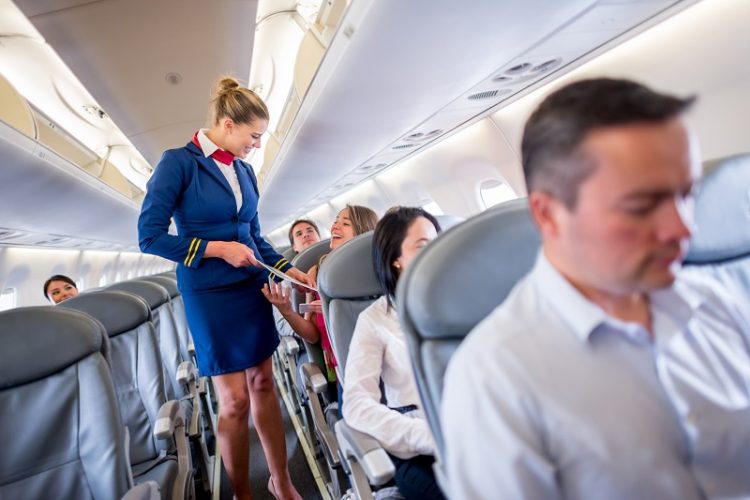Improved passenger experience? The missing piece lies in your flight crew
Posted: 21 August 2018 | Dassault Systèmes | No comments yet
As a Dutch person living and working in the United States, I fly home to visit family and friends a few times a year. One thing that sometimes strikes me on my trans-Atlantic flights is that even with a mix of American and Dutch passengers onboard, English-speaking flight attendants often read out the safety instructions in broken, phonetic Dutch…


While I speak English regularly in my daily life, I imagine that for other international travellers this language barrier can often lead to misunderstandings and potential safety hazards. On the flip side, I’ve seen how having a native Dutch speaking in-flight crew can improve fellow passengers’ travel experience. On my last flight, for instance, I saw an elderly Dutch woman enjoy being able to interact with her in-flight crew.
Recently we at Quintiq detailed how smarter planning on the ground can result in an improved experience for your passengers. Whether that is a result of quicker unloading of baggage or shorter lines at your check-in desks, these experiences at the terminal can boost your reputation and create loyal customers.
But of course, providing a great experience in the terminal itself is only one piece of the puzzle. Excellent customer service and communication in the air is key to providing a relaxed trip for passengers and winning lifelong advocates. And while your pilots may shoulder the burden of getting everyone to their destination, your in-flight crew is critical to ensuring a safe and comfortable flight, and serve as the primary face of your airline and brand while in the air. This means that having a well-trained and skilled in-flight workforce can mean the difference between a repeat customer and a one-time flyer.
Join us live: Shaping the Next Generation of Hold Baggage and Air Cargo Screening
Join us live for an insightful webinar on 11th December at 14:00 GMT, in collaboration with Smiths Detection, as we explore the strategic balance of operational efficiency, regulatory compliance, and sustainability in high-volume security environments.
This session offers a focused look into future-proofing your security strategy.
Key learning points
- Cost Reduction: Strategies to minimize bag travel time while simultaneously reducing operational costs.
- Regulatory Roadmap: Insights into the next wave of regulatory changes and their impact on future investment decisions.
- Sustainable Systems: Practical approaches to building sustainability into security systems and lowering the total cost of ownership (TCO).
- Scalable Solutions: Real-world examples of scalable systems supporting current airport growth and preparing for tomorrow.
Register now for expert insights, case studies, and actionable strategies on operational efficiency!
As airlines continue to grow and increase hiring to fill gaps and future demand among their flight crews, many are putting an increased focus on communication skills and ability to handle emergency situations. Many airlines now look to hire crew members with “language of destination” skills. Those experienced in public safety, such as an emergency medical technician (EMT) or firefighter, are also sought after to ensure better equipped crew in managing emergencies in the air.
While these recruiting practices are a big step towards improving the quality of in-flight experience for passengers, they add new levels of planning complexity for airlines to manage. For instance, when making long-term projections and planning decisions around staff headcount needs, understanding which skillsets are in demand may impact hiring plans. At the same time, these decisions need to be made while factoring in where each dollar of operating cost will have the biggest impact. Will an extra Spanish-speaking flight attendant out of Atlanta be more valuable than a French-speaking one out of New York?
Likewise, flight routes might impact decisions around where to hire crew members with a language or safety skill. It is also important to understand the right time to hire. Seasonal trends need to be considered, along with hiring and training durations, in order to be ready for busy seasons like summer.
While making smart strategic decisions about new hiring decisions is crucial to growth, optimising the utilisation of your existing staff through better scheduling of vacations and training can also help reduce costs and decrease shortfalls. Instead of merely analysing gaps due to planned leave events at an overall level, going down to the level of base-language of destination can help airlines eliminate shortfalls of certain skillsets when planned leave occurs.
Finally, planning crews is different from the planning of other resources in the aviation space for one important reason: the human factor. Poor plans or inconsistent schedules can reduce employee satisfaction. When a negative attitude ultimately makes its way into the cabin, it’s felt by passengers and other crew members alike.
Your in-flight crew plays a critical role in creating an exceptional passenger experience. At Quintiq, we’ve seen first-hand how airlines can see improvements in employee satisfaction and on-time performance through smarter planning. I invite you to reach out to learn more about how we can help your airline soar higher.
The International Airport Summit is open for registration!
Date: 19 – 20 November 2025
Location: JW Marriott Hotel Berlin
At our flagship event of the year, we will dive into the future of airport operations, with expert-led sessions on passenger experience, innovative smart technologies, baggage handling, airside operations, data, security, and sustainability.
This is where global airport leaders come together to share insights, challenges, and real-world solutions.
Limited complimentary passes are available for eligible professionals – first come, first served!


















